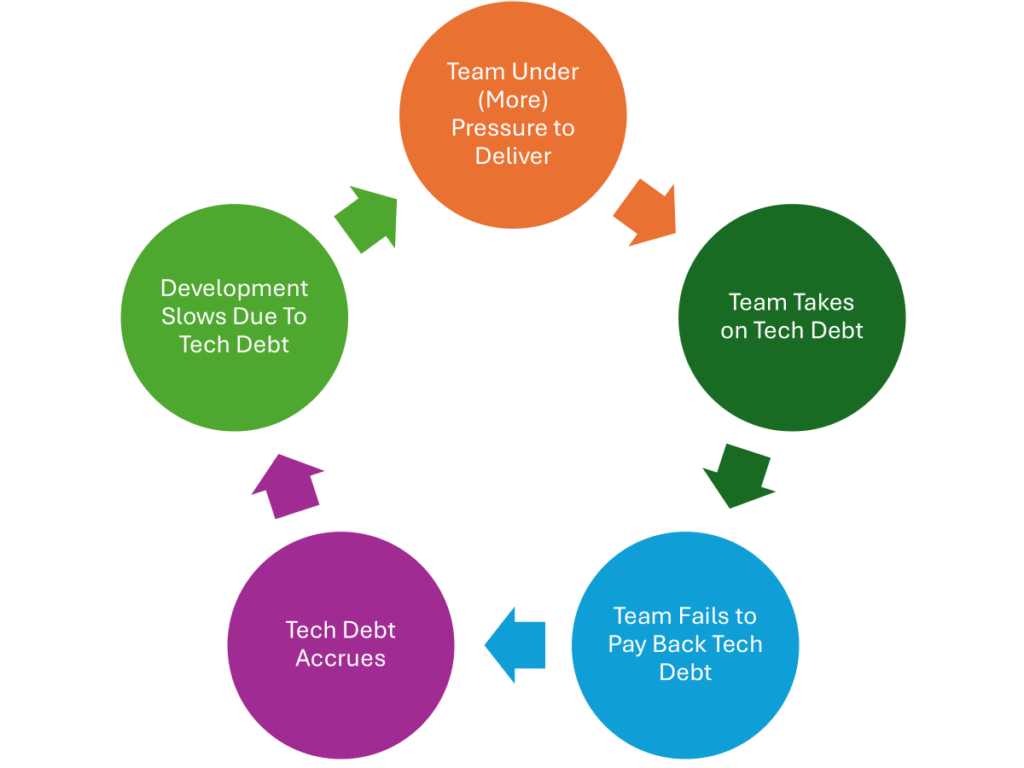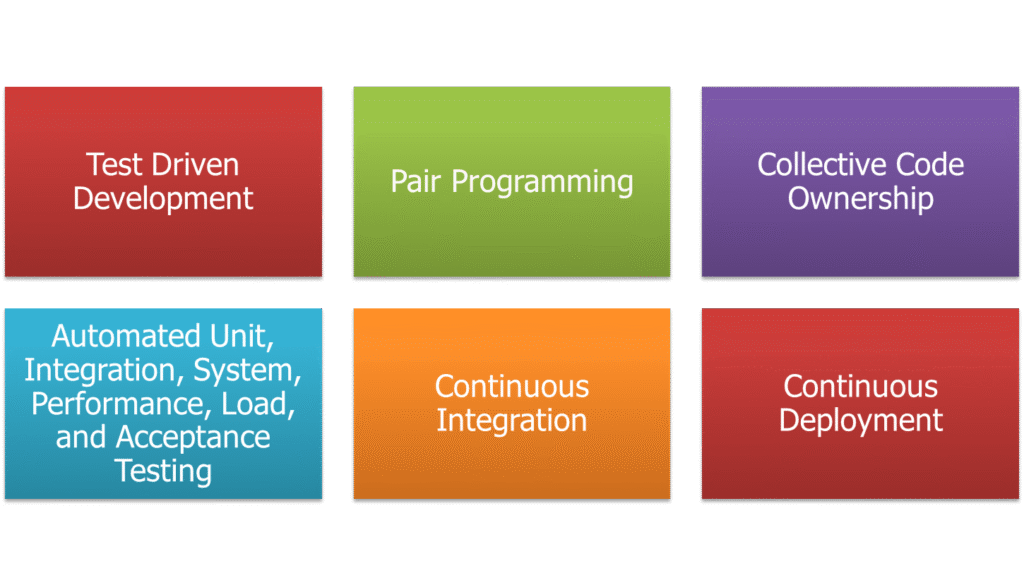As a product manager, you’ve probably heard your engineering team mention “technical debt” during sprint planning or retrospectives. Maybe they’ve pushed back on a feature request, citing the need to “pay down technical debt first.” Or perhaps you’ve noticed that what used to take two weeks now takes six, and when you ask why, the answer is always something vague about “the codebase.”
Technical debt is real, it’s expensive, and as a PM, you play a critical role in both creating it and managing it.
What Is Technical Debt?
Ward Cunningham, who coined the term in 1992, described it perfectly:
“Shipping first time code is like going into debt. A little debt speeds development so long as it is paid back promptly with a rewrite… The danger occurs when the debt is not repaid. Every minute spent on not-quite-right code counts as interest on that debt.”
Technical debt is the accumulated cost of shortcuts taken during development. Just like financial debt, it’s not always bad. Sometimes borrowing makes sense to seize an opportunity. But if you don’t pay it back, the interest compounds and eventually cripples your ability to deliver.
Why Technical Debt Matters: The Financial Analogy

Think about your personal finances for a moment.
Strategic debt is like taking out a mortgage to buy a house. You’re making a calculated decision that the benefit outweighs the cost of interest payments. This is similar to when your team deliberately takes a shortcut to hit a critical market deadline, knowing they’ll come back and fix it properly.
Destructive debt is like maxing out credit cards without a repayment plan. The high interest rates compound, and soon you can’t afford anything new. This is what happens when shortcuts pile up without ever being addressed. Every new feature takes longer because the team is constantly working around previous compromises.
The key difference? Intentionality and repayment planning.
When technical debt goes unmanaged, your team’s cost of change increases dramatically over time. What once took two days starts taking two weeks. Not because your engineers got worse at their jobs, but because they’re paying compound interest on years of accumulated debt.
How to Recognize Technical Debt: Six Warning Signs

You can’t read code, and that’s fine. But you can spot technical debt through its symptoms:
1. Velocity slowdown without obvious cause. Features that once took a few days now take weeks, but everyone seems to be working just as hard.
2. The “bug whack-a-mole” game. Your team fixes one bug, and three more pop up in seemingly unrelated areas. This is fragility, where changes in one area cascade unpredictably to others.
3. Engineers say “no” to simple requests. “Can we just add a button?” sounds simple to you, but your tech lead says it will take three weeks because the existing code is so tangled.
4. Estimates keep getting bigger. When your team starts padding estimates more and more, that’s debt talking. The interest payment is built into every estimate.
5. Team morale takes a hit. Your once-excited engineers start seeming frustrated or defeated. They avoid working on certain parts of the application.
6. “It would be faster to rewrite it.” When this phrase comes up frequently, you’re approaching technical bankruptcy. The debt has compounded to the point where working within the existing system is more expensive than starting over.
How Product Manager Pressure Creates Technical Debt
The reality is that Product managers are often the primary drivers of technical debt accumulation.
You’re under pressure from executives to deliver more features. Competition is fierce. Sales needs that new capability to close a big deal. You push your team for more, faster.
Your engineers, wanting to help and feeling the pressure, start making tradeoffs. They skip writing tests because “we don’t have time.” They copy-paste code instead of refactoring because it’s faster. They implement a quick hack instead of the proper solution because you need it next sprint.
Every time you say “let’s just get this out asap” and tell the team they can clean it up “later”, you’re taking out a high-interest loan. And in software, “later” almost never comes because as soon as this feature ships, you’re already pushing for the next one.
The Vicious Cycle

Here’s how technical debt typically destroys teams:
Stage 1: The Honeymoon – The project starts great. The codebase is clean. Features ship fast.
Stage 2: The Slowdown – Velocity decreases. The team points to specific issues: a tricky bug, a complex feature. You accept it and move on.
Stage 3: The Pressure Response – Instead of giving the team the time to investigate the root cause, you apply more pressure. The team responds by taking shortcuts, incurring more debt.
Stage 4: The Spiral – More debt means things slow down further. You apply more pressure. The team takes more shortcuts. Bugs multiply. Morale plummets.
Stage 5: The Crisis – Someone important asks why nothing is getting done. The team finally admits: “We need to stop feature development to fix our technical debt.”
Stage 6: The False Solution – Teams convince themselves the answer is a complete rewrite. But here’s the trap: If you don’t change how you manage technical debt, you’ll end up in the exact same place in 18 months.
The real problem isn’t the technology stack. It’s the lack of a systematic approach to managing technical debt.
What Good Engineering Practices Look Like

You don’t need to become an engineer, but you should recognize what good practices look like so you can support your team. Teams that keep technical debt under control use practices like Test-Driven Development, pair programming, collective code ownership, automated testing, and continuous integration.
What you need to know:
These practices feel slower initially but pay off within months. When your team says “writing tests adds time,” recognize they’re investing in sustainability. When you see two engineers working together, resist calculating “wasted” capacity. When engineers ask for time to learn unfamiliar parts of the codebase, support it.
Questions to ask your tech lead:
- “How much of our code has automated tests?”
- “How often do we deploy to production?”
- “If someone went on vacation, could others work on their code?”
- “Are we building quality in, or bolting it on later?”
Red flags that practices aren’t happening:
- “We’ll add tests later” (they won’t)
- Only one person can work on critical systems
- Deployment requires manual steps and causes anxiety
- Code reviews happen days after code is written
For more on these practices, see Top 5 Agile Engineering Practices.
Your Role as a PM: Four Key Responsibilities
Your job isn’t to manage the technical details of debt reduction. Your job is to create the environment where your team can manage it effectively. Here’s what that means in practice:
1. Work With Your Team to Make Debt Visible

You can’t manage what you can’t see. Technical debt needs to be tracked just like feature work.
What this looks like:
Have a conversation with your tech lead: “I need to understand our technical debt so I can help protect time for it. What would it look like to have a shared view that shows what debt we have, its impact, and the effort to fix it?”
Your team might create a debt register, use tagged backlog items, or add a section to your product management tool. The format doesn’t matter. What matters is that debt is logged as it’s created (not discovered months later), and your teams are using tools to track quality metrics like security, reliability, maintainability, etc. These are made visible in your regular planning sessions.
Why this matters:
Without visibility, debt reduction looks like the team “doing nothing” while velocity drops. With visibility, you can have informed conversations about feature vs. debt tradeoffs.
For details on how your team can establish this foundation, see The 6 Step Technical Debt Management Plan.
2. Ensure Your Team Measures and Quantifies Debt

Visibility is step one. Measurement is step two. You need a way to track whether debt is increasing or decreasing.
What this looks like:
Ask your tech lead: “Can we quantify our technical debt as a number I can track over time? Whether it’s hours of work, a dollar amount, or a score from a tool doesn’t matter. I just need to know if we’re trending in the right direction.”
Your team might use automated tools like SonarQube, estimate remediation effort in hours, or create their own scoring system. Again, the specific approach matters less than having a consistent way to measure.
Why this matters:
Without measurement, you’re flying blind. Is your strategy working? Are certain types of features creating more debt than others? Has debt reached a critical level? You can’t answer these questions without a number to track.
3. Monitor the Trend and Act on What You See

Once debt is measured, your job is to watch the trend line and respond appropriately.
What this looks like:
Check debt metrics monthly. Look for patterns: Does debt spike after rushed releases? Are particular applications accumulating more debt than others? Is the trend line going up or down?
When the trend line goes down, celebrate it with the team. When it goes up, ask the team to investigate why and adjust your approach.
Why this matters:
The absolute amount of debt matters less than the direction. A team with moderate debt that’s decreasing is in good shape. A team with low debt that’s rapidly increasing is heading for crisis.
4. Protect Time for Debt Reduction

This is the hardest part and where most PMs fail. Once debt is visible and measured, you must protect time for the team to address it.
What this looks like:
Stop treating technical debt work as optional. When your team needs time to refactor code, add tests, or reduce complexity, that’s not a nice-to-have. It’s maintenance, like changing the oil in your car. Skip it long enough and the engine seizes.
Work with your team to choose a debt reduction strategy:
- For teams starting out: You might dedicate a Sprint to debt reduction after major releases
- For teams with ongoing debt: Maybe allocate 20% of each Sprint capacity to debt work
- For mature teams: Build debt reduction into your Definition of Done so it happens continuously
The specific approach depends on team maturity, skill level, and amount of technical debt. Let the team take account for technical debt work in Sprint capacity planning. When the team hits an agreed debt limit, honor your commitment to slow feature work.
Why this matters:
Engineers can’t pay down debt without dedicated time. If debt work only happens “when there’s time,” it will never happen because there’s never time. You must create the time by making it part of the team’s on-going work.
Prioritizing Which Debt to Address First

Your team can’t fix all technical debt at once. Work with your team to tackle the high-interest debt: the shortcuts that cause the most pain.
High priority:
- Code that changes frequently and is hard to change
- Systems causing repeated production incidents
- Areas blocking important features or integrations
Medium priority:
- Code that changes occasionally and has moderate complexity
- Systems with workarounds that slow development
- Areas with decent test coverage but poor design
Low priority:
- Code that rarely changes, even if it’s messy
- Systems that work reliably despite technical issues
- Areas scheduled for replacement or retirement
Work with your tech lead to identify which debt is costing you the most. If you could only fix one thing this quarter, what would have the biggest impact? That’s where to start.
Critical Mindset Shifts

To manage technical debt effectively, you need to change how you think about your role:
From: “My job is to maximize feature delivery”
To: “My job is to maximize sustainable value delivery”
From: “Technical debt is an engineering problem”
To: “Technical debt is a product and business problem that I need to help manage”
From: “We’ll come back and fix it later”
To: “We’ll fix it now or acknowledge we’re taking on debt and schedule repayment”
From: “Why is this taking so long?”
To: “What can we descope to ship this faster without incurring debt?”
Conclusion
Technical debt isn’t a technical problem. It’s a product management problem. Your engineers can’t fix it without your support.
The teams that consistently deliver fast don’t skip technical debt management. They’ve made it a core part of how they work. They take on debt strategically, they pay it back deliberately, and they maintain a sustainable pace.
The teams that struggle aren’t slower because they have worse engineers. They’re slower because years of unmanaged debt have compounded to the point where everything is hard.
The next time your engineering team asks for time to address technical debt, don’t see it as a distraction from “real work.” See it as essential maintenance that enables all your future work. Because the alternative, letting debt compound indefinitely, doesn’t end with a productive team delivering features. It ends with a rewrite, a migration, or a mass exodus of your best engineers.
As a PM, you might not be able to write clean code. But you can create the environment where your team can. And that’s exactly what great product managers do.
Frequently Asked Questions
How much technical debt is too much?
Monitor the trend lines more than the absolute numbers. Ensure that technical debt is stable or decreasing.
Can technical debt ever be strategic?
Yes. Deliberate technical debt to hit a critical market window or respond to competition can be strategic. The key is planning the payback before taking on the debt and actually following through.
What if my team wants to rewrite everything instead of paying down debt incrementally?
Rewrites are rarely the answer. They take longer than expected, delay all feature work, and often recreate the same problems if you haven’t changed how you manage debt. Push for incremental debt reduction unless the system is truly unmaintainable.
Resources and Further Reading
Kaizenko Training and Coaching:
- Working with Legacy Code Workshop
- AI Test-Driven Development Workshop
- Agile Engineering Training and Coaching Program
From the Kaizenko Technical Debt Series:
- What is Technical Debt?
- Top 4 Symptoms of Bad Code
- Good Technical Debt vs. Bad Technical Debt
- The 6 Step Technical Debt Management Plan
- 5 Ways Scrum Teams Manage Technical Debt
- Top 5 Agile Engineering Practices
Need help implementing these practices with your team? Explore our training programs or get in touch.
